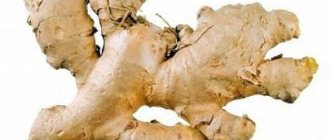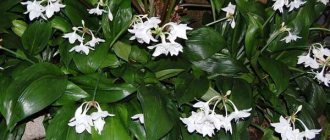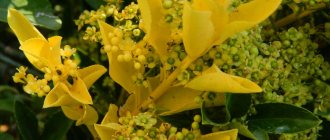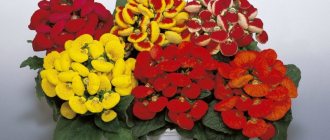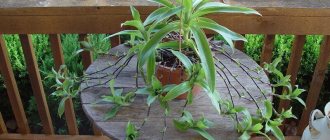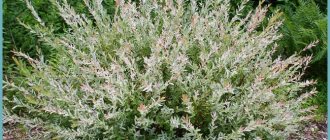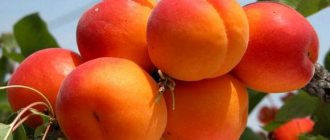The plant comes from South America, from where it was brought and first propagated by the French breeder C. Plumer (XVII century), hence the name Plumeria from the Kutrov family.
The plant is unique for its various representatives: bushes and trees. Flower growers strive to grow plumeria because of the beautiful delicate flowers of white-pink or yellow.
Flowering lasts all summer, the flowers themselves are large up to 10 cm. They are rare, because the plant grows up to 2 m, more often it can be seen in greenhouses.
Light
Plumeria loves light very much; it only needs southern windows, even in the greenhouse. It needs more than 6 hours of sun a day, otherwise the plant will not bloom. As a last resort, you can grow on the east or west side.
When it warms up, you need to take the plant outside, but getting used to direct sunlight should be gradual.
Important! Drafts and rain are excluded and should be brought into the house. From a sudden transition from the apartment to the sun, the leaves can get burned.
Home care
Caring for plumeria is quite difficult. For normal development, it needs to create conditions that are not entirely suitable for other cultures.
Location and lighting
The plant loves light very much. It should be exposed to direct sunlight for at least 6 hours a day. Therefore, it is better to place the flowerpot on a south window. If there is not enough light, the plumeria simply will not bloom. You can also place it on the eastern and western window sills, but not on the northern ones. In summer, the pot with the plant can be taken out into the fresh air. But you can’t immediately put it in the sun so that the leaves don’t get burned. Avoid exposure to drafts and precipitation.
Soil and drainage
Plumeria grows well in loose, well-drained soil. You can cook it yourself. Mix:
- turf (2);
- peat (1);
- humus (1);
- sand (1).
The soil must be heated in the oven before use to disinfect it. Be sure to place drainage at the bottom of the pot, filling 1/5 of its volume. You can use expanded clay or replace it with eggshells.
Planting and transplanting
Young plumerias need annual transplants. Adult specimens are replanted every 2 years. The procedure is best carried out in the spring.
Take a pot slightly larger than the old one. Fill it with drainage and add a layer of soil. Replant the plant and fill the voids with soil.
To control the rapid growth of plumeria, you can not transplant it into another pot, but simply cut the root to 1/3 of its length. Plant back, sprinkled with fresh soil mixture. The main thing is not to deepen the growth point. Old trees do not need to be replanted at all, but only change the top layer of soil.
Video - instructions for transplanting Plumeria:
Temperature
Plumeria is a heat-loving crop. During the period of active growth, it is kept in conditions of +25-30 degrees. Starting in autumn, the temperature is gradually reduced, preparing for the dormant period. But it should not be allowed to be less than +15-17 degrees.
Watering and humidity
Plumeria does not like to be overwatered. Between waterings, you need to allow the soil to dry out a couple of centimeters. Warm, well-settled water is required. In the autumn-winter season, soil moisture is reduced. But the soil should not be allowed to dry out completely .
Note! To ensure high air humidity, the plant must be sprayed regularly. It is important that water does not get on the flowers. It is better to carry out the procedure in the morning or evening, when there is no scorching sun. You can place the container with plumeria on a tray with wet expanded clay. Make sure that the water does not come into contact with the bottom of the pot.
Feeding and fertilizers
You can start fertilizing when the crop begins a period of active growth. For plumeria, complex fertilizers for flowering plants are suitable, which are applied 2 times a month. If the plant is taken outside in the summer, you can alternate root and foliar feeding. It is recommended to make the concentration of the solution 2 times weaker than indicated in the instructions. In the fall, the amount of fertilizing is gradually reduced, and in winter it is not carried out at all.
Flowering and dormant period
If plumeria is planted from a cutting, flowering occurs in the 2nd year of life. If from seed - 4-5 years after planting. The plant blooms abundantly and for a long time. The flowers have a pleasant aroma, consist of 5 petals, and come in different shades. The most intense aroma of the flowers thins in the morning. Depending on the variety, they may smell like jasmine, citrus, or almond. Thanks to its pleasant smell, plumeria attracts many insects. But, unfortunately, it does not produce nectar. After flowering ends, green or red-brown pods appear in which the seeds ripen.
If plumeria does not bloom, this may be due to several reasons:
- during transplantation, the growing point was buried;
- bad light;
- improper care.
In winter, the plant goes into a dormant state. It lasts 3-6 weeks, depending on the type. Some plumerias lose their leaves, others remain green. During this period, all processes slow down. The tree needs less watering and does not require fertilizing.
Trimming
At the end of winter, even before emerging from hibernation, the plant needs to be pruned. Flowers form on young shoots. It is necessary to shorten the stems precisely in order to stimulate their growth and achieve abundant flowering. The procedure must be carried out with a sharp, disinfected knife. Cuttings can be used for further propagation.
But you need to take into account that it will not be possible to achieve a lush crown in one year. Branching of plumeria begins somewhere in the 3-4th year of life. Pruning of young specimens is more necessary to curb the growth of the tree.
Virulence
Plumeria juice contains toxic substances. Contact with the skin can cause irritation, redness, and an allergic reaction. If this happens, you need to wash your skin thoroughly under running water without soap. When working with the plant, it is recommended to use rubber gloves. And place the flowerpot out of the reach of children.
Watering
Indoors should be watered after the top layer of soil has dried with soft water (settled). Then plumeria flowers will give you aesthetic pleasure.
In winter, reduce watering, do not overdry the soil.
Excess moisture is also harmful, so be careful when watering.
Air humidity
Systematic spraying is recommended during active growth. Soft water that has stood for a day is ideal for watering and spraying.
To increase humidity, a little small pebbles (expanded clay) are poured into the pan, after which water (soft) is poured.
Important! The bottom of the container should not come into contact with the water in the pan. You need to spray the plant carefully; flowers do not like water.
Quiet time
In apartments, plumeria needs rest for 3-6 weeks in winter. The leaves fall, and in the spring a new stage of growth and flowering begins.
Important! The poison in plumeria juice, if it gets on the skin, can cause severe irritation. Immediately hold the sore spot under running water for a long time.
Flower pruning
Plumeria is distinguished by thick, fleshy branches. Some of them can be about five centimeters in diameter. The best time to prune the plant is in early spring, when the frangipani begins its growing season.
Pruning is carried out for weak, too long, diseased, deformed and old shoots. When performing this procedure, you need to remember that this is a flowering plant, and the process is carried out only on branches that have appeared during the year. This fact must be taken into account.
After pruning is completed, cuttings remain. They can be used to propagate plumeria. Their length should not exceed twenty centimeters.
Transfer
In March-April, a young tree is replanted every year, only an adult tree is replanted after 2 years. Choose a container slightly larger than the previous one (2-3 cm). When there is no suitable pot, you need to trim the roots by 5 cm.
The bottom of the container is covered 1/5 with drainage (broken brick, expanded clay or eggshells). Then add the mixture: peat, turf, humus and sand (1:2:1:1).
Reproduction
At home, plumeria is propagated by seeds and cuttings. With the first method, the appearance of the plant may differ from the parent, and the first flowers appear 2-3 years after planting. Cuttings ensure the preservation of varietal characteristics, and flowering occurs after about a year.
Seeds
Before planting, seeds are pre-soaked in a solution of a growth stimulator, placed on a damp cloth and kept in a warm place for a day, periodically moistening the cloth with a spray bottle.
The soil for sowing is taken of the same composition as for replanting. It is poured into six-centimeter seedling pots with drainage holes.
The seed is placed in the ground so that the lionfish remains above the soil level. After careful watering, the pot is covered with film and sent to a warm place. The crops are ventilated twice a day.
It takes a week or two for the first shoots to grow.
It is important after germination to help the plant get rid of the lionfish - the remnant of the seed. To do this, the dry skin of the wing is pre-soaked and then carefully removed from the sprout with tweezers.
After the stem reaches a height of 6 centimeters, it is time to begin the first transplant.
The pot should be a few centimeters larger in diameter and have holes. Drainage is poured into the bottom. The sprout is transplanted to a new place along with a lump of earth.
Cuttings
Cuttings are made after the plant emerges from the dormant period, at the very beginning of spring. The cut should be oblique. It is immediately moistened with water, then with a root growth stimulator.
The pot is filled with three layers of soil: earthen mixture + perlite + earthen mixture. The cutting is placed in the pot at a right angle so that its end is in the middle, perlite layer. The pot is placed in a very warm (not lower than +25 ° C) and as bright place as possible. On cloudy days, additional lighting is provided with fluorescent lamps.
Water carefully, gradually increasing the amount of water.
Rooting occurs after 2-3 months. The young leaves that appear on the cuttings will indicate its success.
Varieties
Plumeria alba is found in the Antilles, up to 10 m tall, has fragrant flowers and narrow leaves.
Red plumeria grows in Mexico and Venezuela up to 5 m with larger leaves and flowers of various colors: snow-white, pink, bright yellow and red.
An exotic tree with delicate flowers of various shades and a wonderful aroma will bloom for a long time.
The photo shows plumeria of different types and varieties.
Diseases and pests
Improper and irresponsible care leads to the appearance of diseases, and pests attack a weak plant more often. Trouble can be identified by symptoms:
- the buds do not open - the plant is cold (move to a warmer place; in winter you can insulate the roots with a soft, warm cloth);
- stretches out - poor lighting (move to a bright place);
- leaves fall - the plant is preparing for hibernation, a natural physiological process;
- grows slowly, fades - moisture deficiency (water abundantly, adjust watering);
- roots rot - stagnation of moisture due to abundant watering (cut off damaged roots, sprinkle healthy areas with coal powder, transplant the bush into new soil, adjust watering).
Sometimes plumeria is affected by spider mites, scale insects, and mealybugs.
